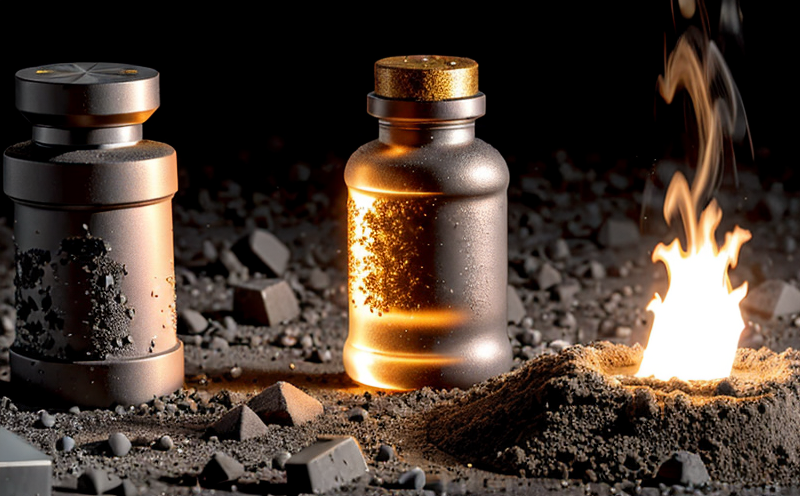ASTM E1519 Irradiation Effects on Advanced Ceramics
The ASTM E1519 standard provides a method for evaluating the effects of radiation-induced materials degradation in advanced ceramics. This service is particularly valuable in sectors such as aerospace, defense, and nuclear engineering where high-performance ceramic components are exposed to ionizing radiation during operation.
Advanced ceramics possess exceptional mechanical properties including high strength-to-weight ratio, thermal stability, and chemical inertness. However, exposure to radiation can induce changes that affect their performance and reliability over time. The ASTM E1519 test simulates the radiation environment encountered by these materials in real-world applications, allowing manufacturers to assess the durability of their products.
The test involves subjecting ceramic specimens to a controlled dose of gamma or electron beam irradiation using facilities like cyclotrons or particle accelerators. The process mimics the types of radiation that components might encounter during operation in nuclear reactors, space missions, or other high-radiation environments.
After irradiation, the specimens undergo a series of characterization tests to evaluate changes in their physical and mechanical properties. These include measurements of hardness, density, fracture toughness, and dimensional stability. Microstructural analysis may also be conducted using scanning electron microscopy (SEM) or transmission electron microscopy (TEM), depending on the complexity of the ceramic material.
The results provide critical information about the radiation resistance of advanced ceramics, enabling manufacturers to optimize their designs for longer service life and enhanced performance. This is particularly important in sectors where component failure can have significant safety implications.
The ASTM E1519 method is widely recognized as a robust tool for assessing the impact of radiation on ceramic materials. By following this standard, laboratories ensure that tests are conducted under consistent conditions, producing reliable data that can be used to make informed decisions about material selection and design.
Understanding the degradation mechanisms in advanced ceramics requires a deep dive into the physics and chemistry of ionizing radiation interactions with solid materials. The ASTM E1519 test leverages this knowledge to provide insights into how specific types of radiation affect different ceramic structures, from simple oxides like alumina (Al2O3) to more complex compounds.
The testing process involves several key steps that ensure accuracy and reproducibility. Specimen preparation is critical, requiring precise cutting and polishing to remove any surface imperfections or contamination that could influence the results. The specimens are then irradiated using a specified dose rate, ensuring that the exposure closely matches real-world conditions.
Post-irradiation analysis involves detailed characterization of the materials’ properties before and after exposure. This comprehensive approach allows for the detection of subtle changes in material behavior that might not be apparent through simple visual inspection. The use of advanced analytical techniques ensures that even minor alterations are captured, providing a complete picture of the ceramic’s response to radiation.
The ASTM E1519 method is particularly useful for evaluating the long-term performance of materials used in critical applications such as nuclear fuel elements or aerospace components. By simulating the radiation environment encountered during operation, this test helps manufacturers identify potential weaknesses and areas for improvement. This information can be used to develop more resilient designs that meet stringent industry standards.
Understanding the degradation mechanisms in advanced ceramics is essential for optimizing material performance and reliability. The ASTM E1519 method provides a reliable means of assessing how these materials respond to radiation, enabling manufacturers to make informed decisions about their design and manufacturing processes.





